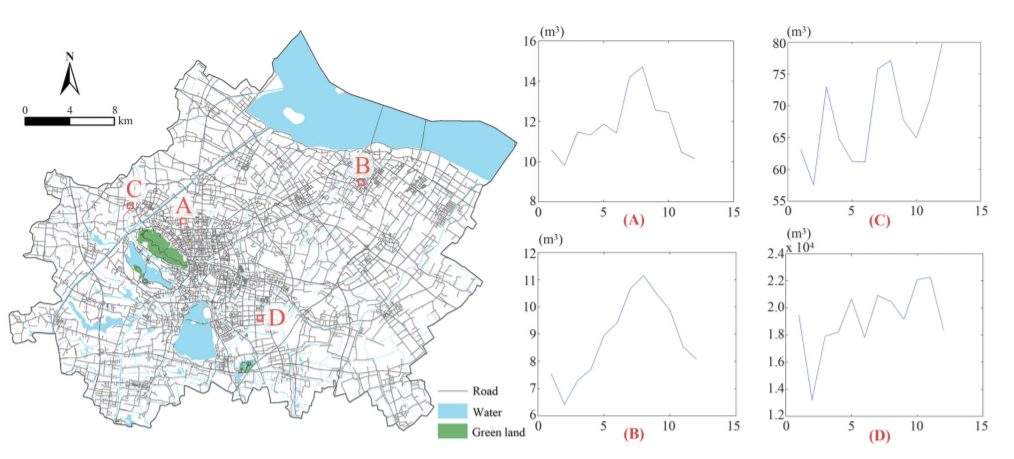Abstract

The biased population coverage and short temporal lengths of newly emerged data sets (e.g., data sets of social media, mobile phones, and smart cards) obstruct the effective analysis of long-term dynamics of landuse patterns, particularly in small and developing cities. This study proposed a framework to delineate and analyze mixed land-use patterns and their evolution using municipal water consumption data. A twostep classification strategy was designed based on the rotation forest scheme to differentiate the socioeconomic types of customers (e.g., residence, commerce, public facility, manufacturing, and recreation) using multiple features extracted from the various forms of water consumption time series. The spatial distributions of the socioeconomic functions were then derived, and the mixed land use was measured using a diversity index based on information entropy. Such an approach was applied to Changshu, a typical developing county-level city in China, for the period 2004 to 2013. The results showed that the urbanization of Changshu experienced both spatial expansion and intensification, with a slightly declining rate of growth in recent years. Apart from the city center, two subcenters have emerged for industrial development. The degree of land-use mixture has increased with urban growth, indicating a maturing of urbanization. This study explored the approach of identifying individual socioeconomic functions by the consumption patterns of municipal services and demonstrated that municipal service data sets can reveal land-use patterns and dynamics at a fine spatial resolution to evaluate urban planning and management, with the advantages of large population coverage and long-term temporal lengths. Key Words: land-use patterns, mixed land use, municipal water consumption, rotation forest, social sensing.
Q.E.D.









